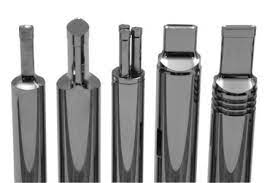| < | studeni, 2022 | > | ||||
| P | U | S | Č | P | S | N |
| 1 | 2 | 3 | 4 | 5 | 6 | |
| 7 | 8 | 9 | 10 | 11 | 12 | 13 |
| 14 | 15 | 16 | 17 | 18 | 19 | 20 |
| 21 | 22 | 23 | 24 | 25 | 26 | 27 |
| 28 | 29 | 30 | ||||
Travanj 2024 (1)
Prosinac 2023 (1)
Kolovoz 2023 (1)
Srpanj 2023 (4)
Travanj 2023 (1)
Studeni 2022 (5)
Listopad 2022 (1)
Rujan 2022 (5)
Kolovoz 2022 (12)
Srpanj 2022 (8)
Lipanj 2022 (3)
Svibanj 2022 (5)
Travanj 2022 (7)
Lipanj 2021 (3)
Lipanj 2020 (1)
Travanj 2019 (7)
Dnevnik.hr
Gol.hr
Zadovoljna.hr
Novaplus.hr
NovaTV.hr
DomaTV.hr
Mojamini.tv
Opis bloga
Linkovi
08.11.2022., utorak
What is the best Toolings For A Press Brake
The toolings of the press brake are split into two components. The punches are located at the top of the ram and dies are at the lower part of the ram. The two parts work together with the plate of metal to complete the bend of the workpiece.
The bending process is where the brake's punch exerts a force onto the metal plate that is on the die. The ram is driven by various power sources. The driving sources include hydraulic, mechanical and servo motors.
Standards of Press Brake Toolings
There are a variety of punches and dies. The accuracy and efficiency of bending is improved only by choosing the right suitable dies and punches to match for bending. The standard size toolings are easier to use in replacement. Because standard sizes are consistent with regards to the construction of tooling components.
This way, you don't have to make many adjustments when replacing punches or dies. They form punch, can be kept in the same place so that it is easy to replace them. The upper portions of the ram of the press brake require the use of a clamping device to fix the punches. The clamping device can keep the punches in place. The punches bend the steel plate with the motion of the ram.
Die segmentation may aid in the bending process of various-sized workpieces. High accuracy is required for press brake toolings. Particularly the accuracy of die shoulders or the punch tip. They can be in direct contact with the sheet metal during they bend. Moreover, the dies and punches that have high precision can make adjustments more difficult in the installation process.
Types of punches and dies
Press brake dies to include V-die, U-die, and Z-die. The most popular is the V-die. The minimum length of flanges must be at four times the thickness of the material.
The precise angle of bending can't be established if this not the situation. V-die sets with different opening widths match the corresponding punches. This way the press brake is able to bend at various angles and different materials.
The three primary types of press brake punches can be divided into three types three types: straight punch, gooseneck punt and acute punch.
The Tooling Selection Process: What to Consider
Bending Material
It is important to determine the type of metal that you want to bend. Die opening, bent radius and bending angle depend on the thickness of the material. Certain steels are stronger and more resistant to corrosion than others.
The resistance is the tension strength(UTS) of the material. Different metals have different tensile strength, so molds with different strengths are required. It is also important to take into consideration that the thickness and length of the plates made of metal determine the amount of tools required.
The V Opening of Material as well as the Radius
If the thickness and type of sheet metal are equal it is possible to have more than one V-die opening size.
The sheet metal will not lose its value when bent. The plate will stretch when the radius of its inner is less than that of the sheet of metal. This can cause the workpiece to expand. While a radius greater than the thickness of the sheet won't cause deformation. If we are choosing the right V-die opening, we should not only avoid radius deformation but also choose a smaller radius.

